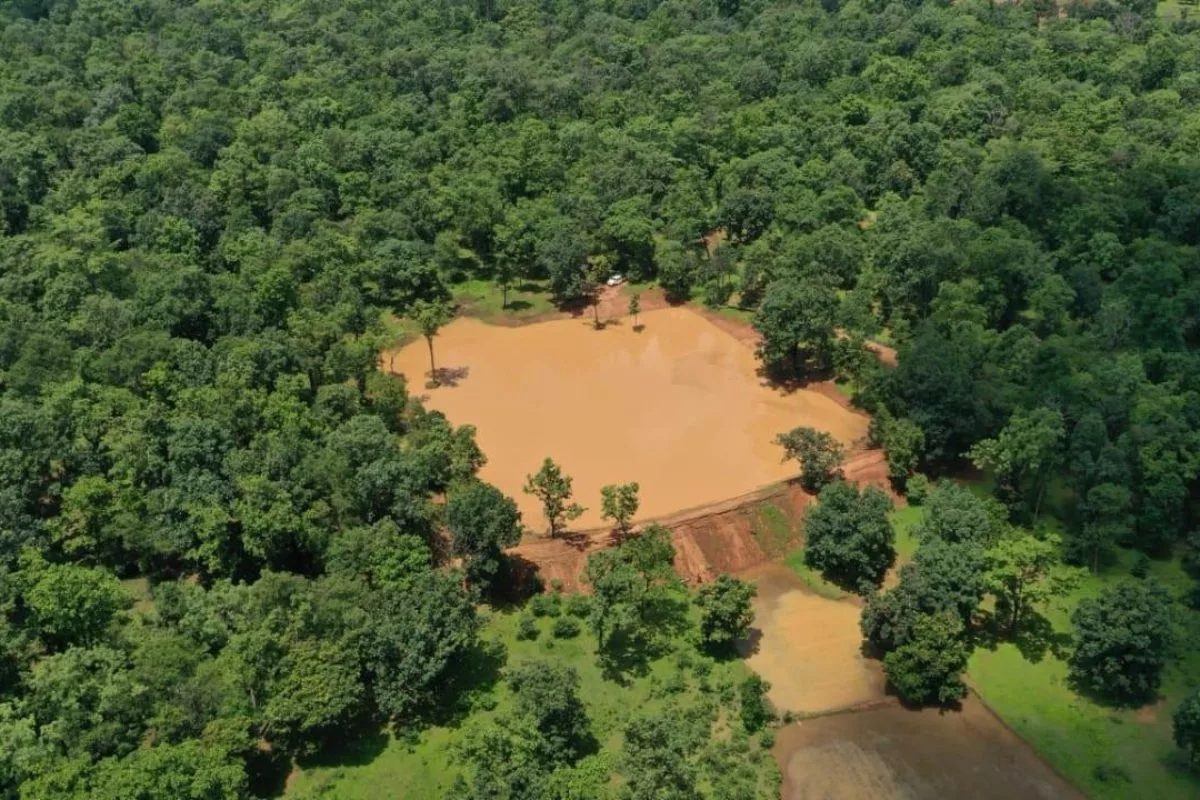Chhattisgarh Launches Green GDP Initiative for Sustainable Development (GS Paper 3, Environment)

Context
- Chhattisgarh has introduced an innovative Green Gross Domestic Product (Green GDP) initiative, marking a significant step in integrating ecological considerations into the state’s economic framework.
- The aim is to showcase how the state’s forests contribute to economic growth, while ensuring environmental sustainability for future generations.
What is Green GDP?
- Green GDP is an economic measurement that incorporates the environmental costs of economic growth.
- Unlike the traditional GDP, which measures only the economic output, Green GDP adjusts for the depletion of natural resources and environmental degradation.
- This comprehensive metric provides a clearer picture of both the economy and the environment’s well-being.
Key Features of Green GDP
- Green GDP considers the environmental impact of economic activities, distinguishing between those that benefit and those that harm the environment.
- It includes the assessment of production and consumption with an emphasis on their ecological effects.
- Investments in sustainable technologies are also evaluated, helping policymakers shift focus towards a greener economy.
Goals of Chhattisgarh’s Green GDP Initiative
Chhattisgarh’s Green GDP initiative seeks to achieve several important objectives:
- Enhanced Policy Planning: The state aims to incorporate ecological considerations into its economic planning and policy-making process, ensuring a balance between growth and environmental health.
- Recognition of Forest Ecosystem Services: A major focus is on formally acknowledging the economic value of services provided by forests, such as carbon absorption, water conservation, and biodiversity support.
- Sustainable Development: The initiative intends to foster an economy that grows while prioritizing the preservation of the environment, helping the state achieve long-term sustainability.
Economic Value of Forests
One of the core aspects of the initiative is the valuation of forest ecosystem services. The state will assess how forests contribute to the economy through:
- Carbon Sequestration: The amount of CO2 absorbed by trees will be evaluated.
- Water Conservation: The economic impact of forest-provided water resources will be calculated.
- Biodiversity: Forests’ role in supporting biodiversity and promoting agricultural productivity will be measured.
These assessments will help highlight the importance of forests in both ecological and economic terms.
Cultural and Economic Role of Forests
- The forests of Chhattisgarh hold immense cultural and spiritual significance for the local tribal communities.
- They also contribute to the economy through eco-tourism activities such as jungle safaris, national park visits, and camping.
- The Green GDP initiative aims to enhance these contributions while ensuring the preservation of forest resources for future generations.
Green GDP in a Global Context
Countries like Bhutan, China, and several European Union nations have already adopted Green GDP principles, which focus on balancing economic growth with environmental conservation. Chhattisgarh’s new initiative aligns with this global movement and contributes to the ongoing global conversation on sustainable development.
Key international models that emphasize ecological sustainability include:
- Bhutan's Gross National Happiness (GNH): A holistic approach to development that prioritizes ecological well-being.
- New Zealand's Living Standards Framework: A model integrating environmental and social dimensions into national development metrics.
Implementation Challenges
While the Green GDP initiative holds great promise, its implementation faces a few challenges:
- Complex Valuation of Natural Resources: Accurately assessing the economic value of natural services such as carbon absorption or water conservation is complex.
- Data Limitations: Reliable and comprehensive data on environmental costs can be difficult to collect, particularly in developing regions.
- Standardization: There is a need for consistent methods of measuring and comparing Green GDP across regions.
Overcoming these challenges is essential for the successful adoption of the Green GDP approach.
Future of Green GDP
- The future of Green GDP is centered on promoting a shift towards a low-carbon economy.
- The initiative will help policymakers make informed decisions and encourage businesses to adopt more sustainable practices.
- It will also stimulate the creation of new green markets, jobs, and innovations as consumer demand for eco-friendly products grows.
- As more regions and countries explore the concept of Green GDP, it will pave the way for an economic model that aligns with global sustainability goals, ensuring a balance between development and environmental preservation.


